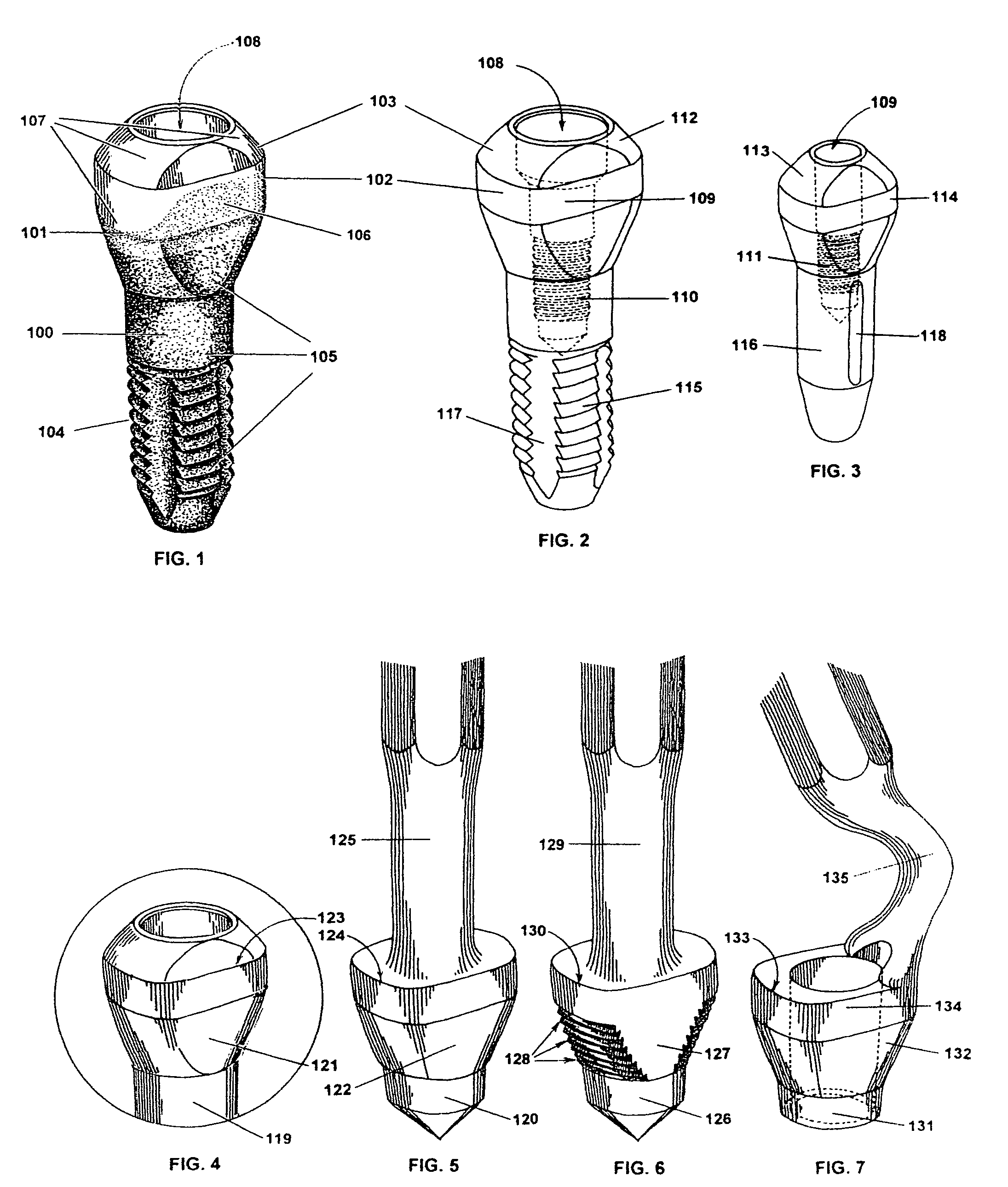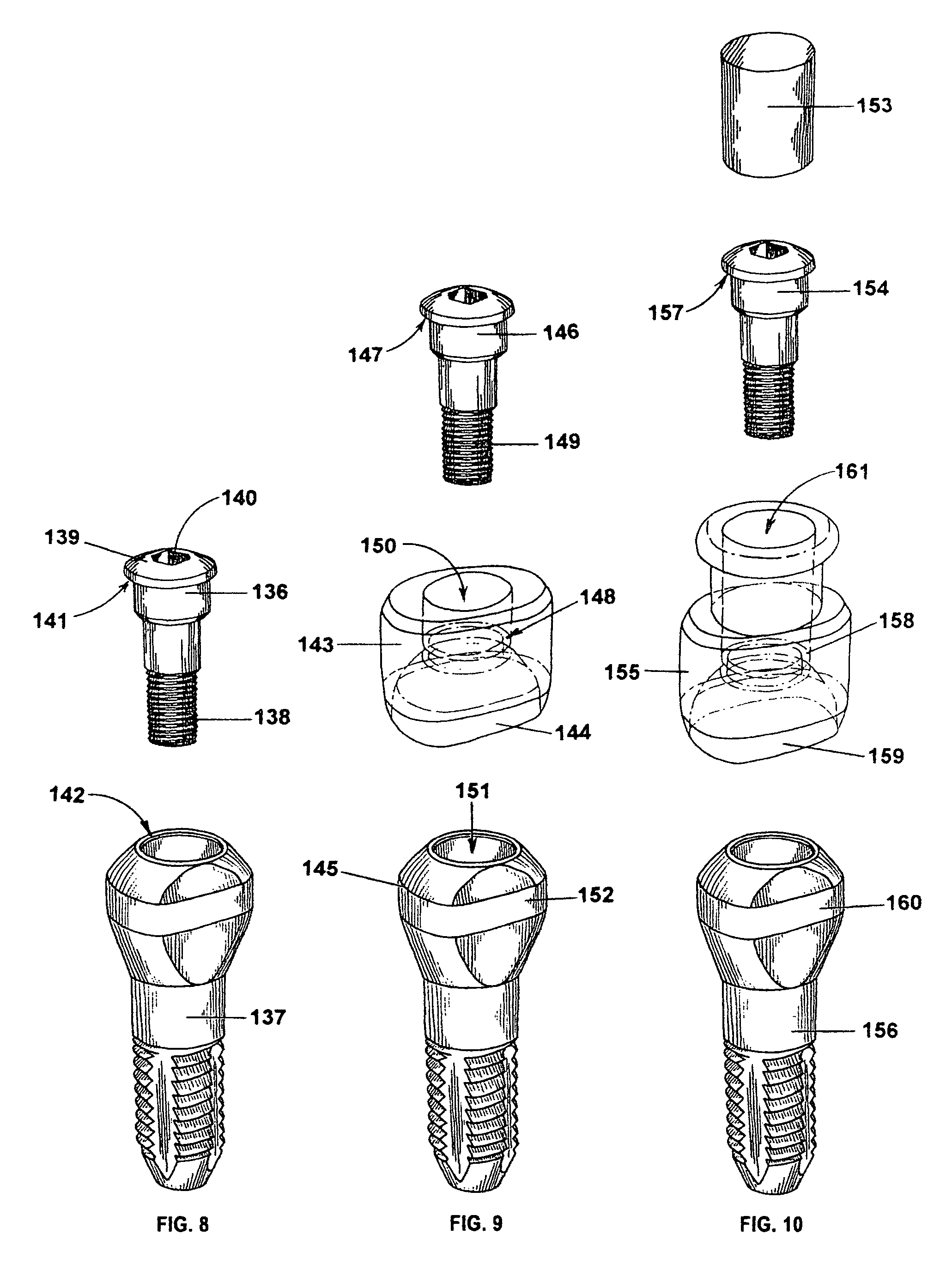Dental implant method and apparatus
- Summary
- Abstract
- Description
- Claims
- Application Information
AI Technical Summary
Benefits of technology
Problems solved by technology
Method used
Image
Examples
Embodiment Construction
[0026]Referring to the drawings, and particularly FIG. 1, a dental implant with a cylindrical body 100, and an anatomically shaped proximal end 101, has nearly parallel walls 102, and has an integrated anatomically shaped abutment base 103 formed as part of the implant and not a separate attachment. Transitional nearly parallel walls 102 between the abutment and the implant adjoin the abutment base to the implant. These walls may have a slight convergence in the coronal direction to facilitate draw of the prosthetic component. This entire assembly is preferably made from titanium or an alloy thereof, and may be cut from one piece of stock material. If the implant body is made of a different material than that of the integrated abutment, the two pieces are permanently fused without any microgap being present after fusion of the parts. This integrated or amalgamated abutment eliminates any abutment / implant seam below the bone or gum tissue. The seam has been implicated in bone die bac...
PUM
 Login to View More
Login to View More Abstract
Description
Claims
Application Information
 Login to View More
Login to View More - R&D
- Intellectual Property
- Life Sciences
- Materials
- Tech Scout
- Unparalleled Data Quality
- Higher Quality Content
- 60% Fewer Hallucinations
Browse by: Latest US Patents, China's latest patents, Technical Efficacy Thesaurus, Application Domain, Technology Topic, Popular Technical Reports.
© 2025 PatSnap. All rights reserved.Legal|Privacy policy|Modern Slavery Act Transparency Statement|Sitemap|About US| Contact US: help@patsnap.com



